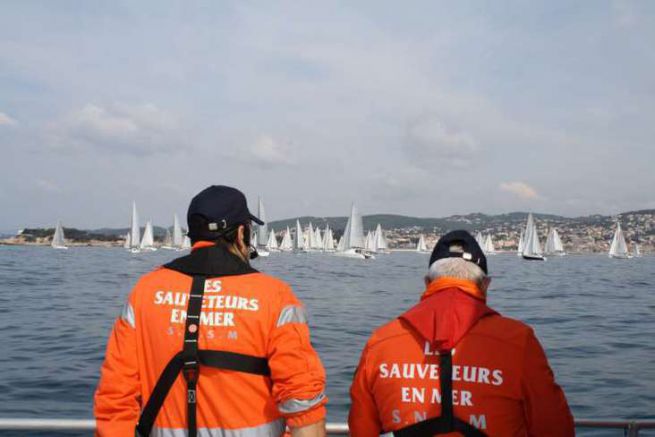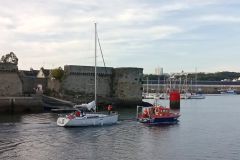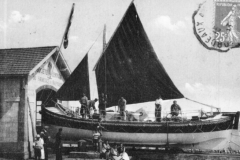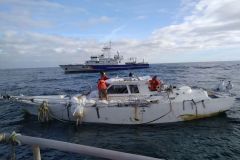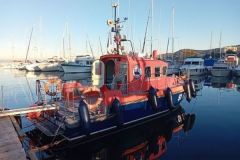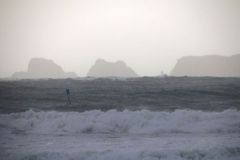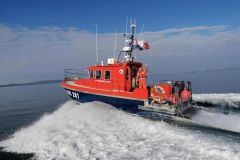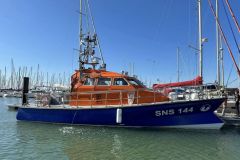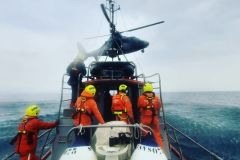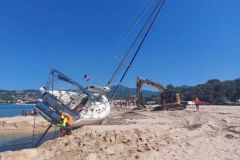The SNSM?
In the long version, this gives "Société National de Sauvetage en Mer". The purpose of this association under the 1901 law? Rescue anyone in danger at sea and on the coast, in metropolitan France and overseas. But also, and perhaps less well known, to make the general public aware of the dangers of the sea and inform them about common sense safety rules... but not always the most respected! That is why, upon request, they also make courtesy visits to requesting boaters to discuss on-board safety and check life-saving equipment.
Responsiveness!
SNSM's volunteer lifeguards operate on two sites: on the coast (mainly beaches), but also, of course, at sea. Thus, all year round, day and night (22% of rescues), up to 20 miles from the coast (or even beyond) and in all weathers, they come to rescue you if you alert them in the event of an actual or potential shipwreck. If you have a VHF, simply use channel 16, which connects directly to the CROSS (Regional Operational Monitoring and Rescue Centre). You can also use your phone by dialing 196. These centres reach the owner of the SNSM boat that is the most pocketed of you. The crew is assembled, and leaves within 15 to 20 minutes.
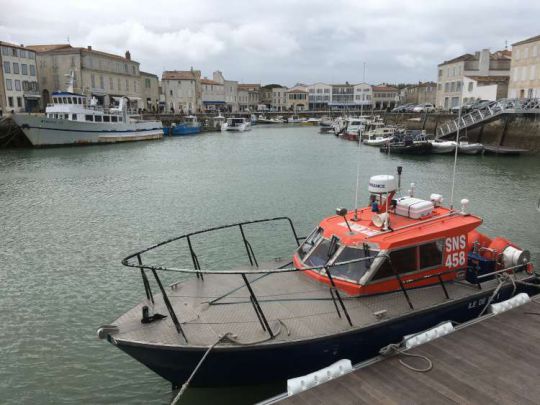
Who are the rescuers?
There are no fewer than 8,000 of them, with an average age of 49 years. They have been engaged for an average of just over eight years. The vast majority of them are men: only 12% of rescuers are counted! Of these, 4,000 are sea rescuers, and they are responsible for more than 50% of the interventions carried out offshore. They have acquired a real know-how in terms of rescue and they have a very specialized knowledge of the maritime area they cover. And to train, they do more than 3500 exercises annually. What if this "they" turns into "you"?
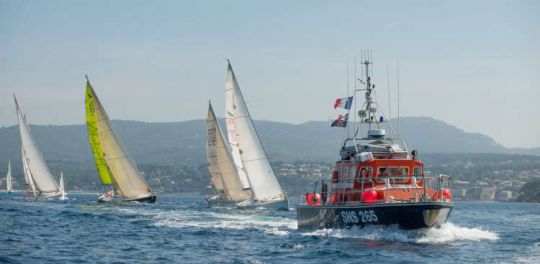
Become a lifeguard
If you are between 18 and 66 years old, age limits for entering the SNSM, it is possible. Contact the president of the station nearest to your home. It must be located only a few kilometres from your residence so that you can board very quickly. You will be cared for by one of the 800 volunteer trainers who work within the stations themselves, the training and intervention centres, and the SNSM's national training centre (Saint-Nazaire). Only then can you board and perform one of the functions defined within the crew. The canoeist? He participates in all manoeuvres and rescue actions. The onboard swimmer is the one who can dive to help in the rescue. The mechanic? He maintains the on-board equipment. The radio? He is in charge of telecommunications aspects. The boss? Not you right away, of course, but you should know that he is an experienced sailor and is appointed by the President of the SNSM. He is the one who manages the smooth running of rescue operations at sea.
SNSM in figures
- 700 all-weather jet-ski canoe boats (41 boats from 14 to 18 metres, 31 boats from 13 to 16 metres, 69 from 8 to 12 metres...)
- 6 million euros invested per year for the acquisition and maintenance of the fleet
- 110,000 donors
- 218 stations: 187 permanent and 31 seasonal stations.
- 6,971 rescue operations in 2018
- 9,243 people rescued in 2018
- 30 million euros of annual budget
- 1 hour and 52 minutes on average per intervention
Once upon a time..
- 1967: creation of the SNSM association, resulting from the merger of the Société Centrale de Sauvetage des Naufragés (SCSN) founded in 1865, and the Société des Hospitaliers Sauveteurs Bretons (HSB), created in 1873, two voluntary associations dedicated to free sea rescue.
- 1970: SNSM is recognized as a public utility.
- 2017: 50 years of the SNSM. Obtaining the "Great National Cause" label for sea rescue. Creation of the National Maritime Rescue Day.
- 2017: creation of the "Mille SNSM".
- 2019: 3rd edition of the "Mille SNSM" and the first "Fête de la mer et des littoraux" (28 to 30 June).
